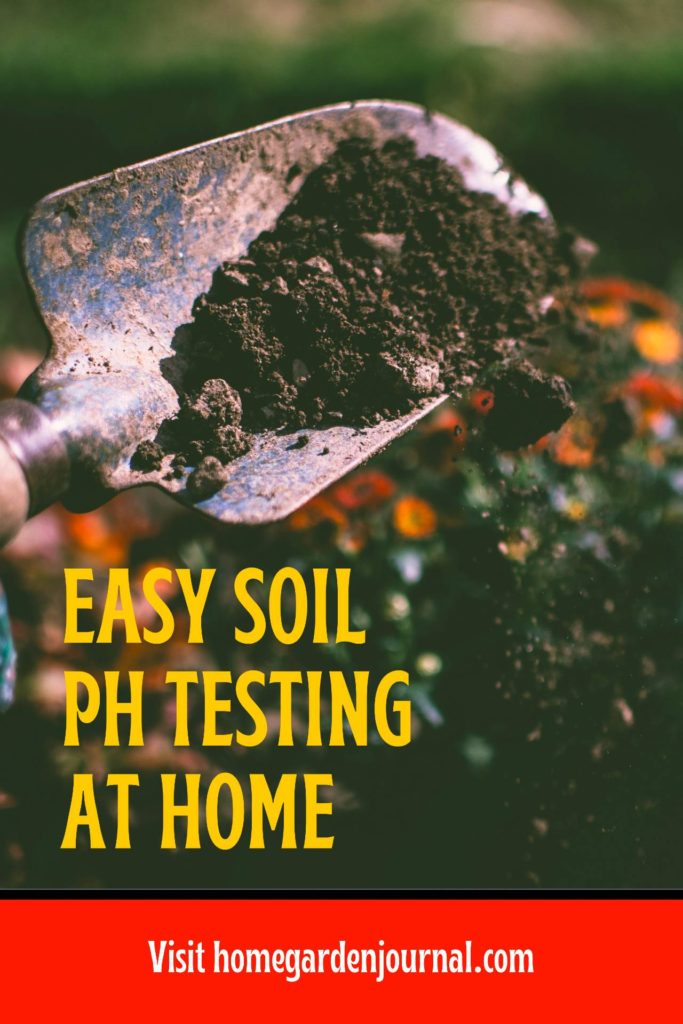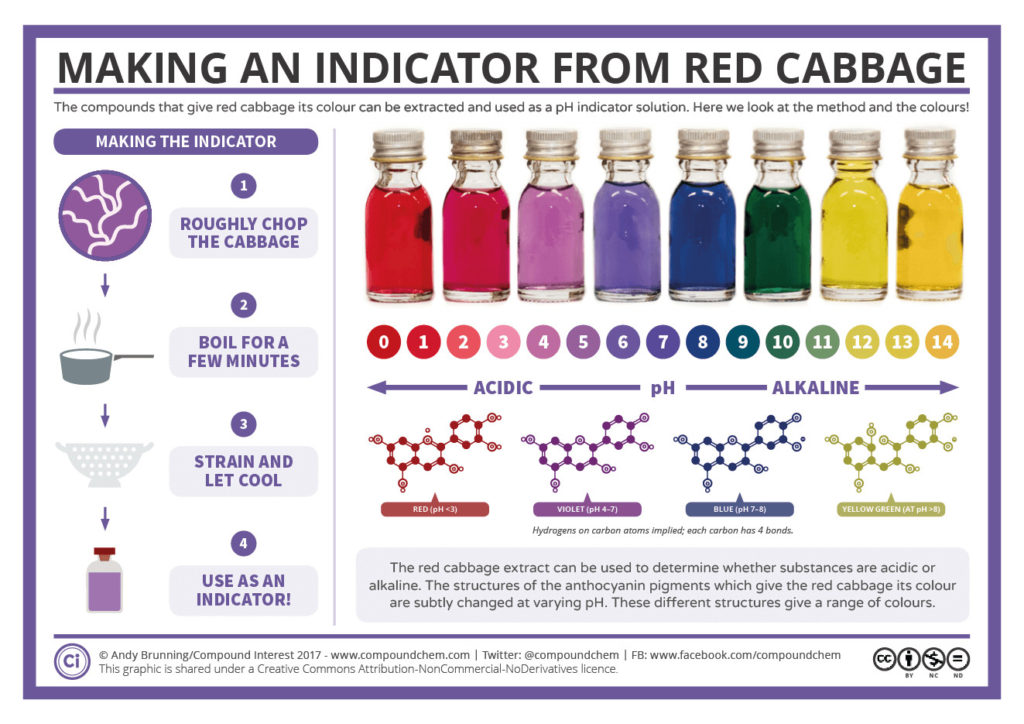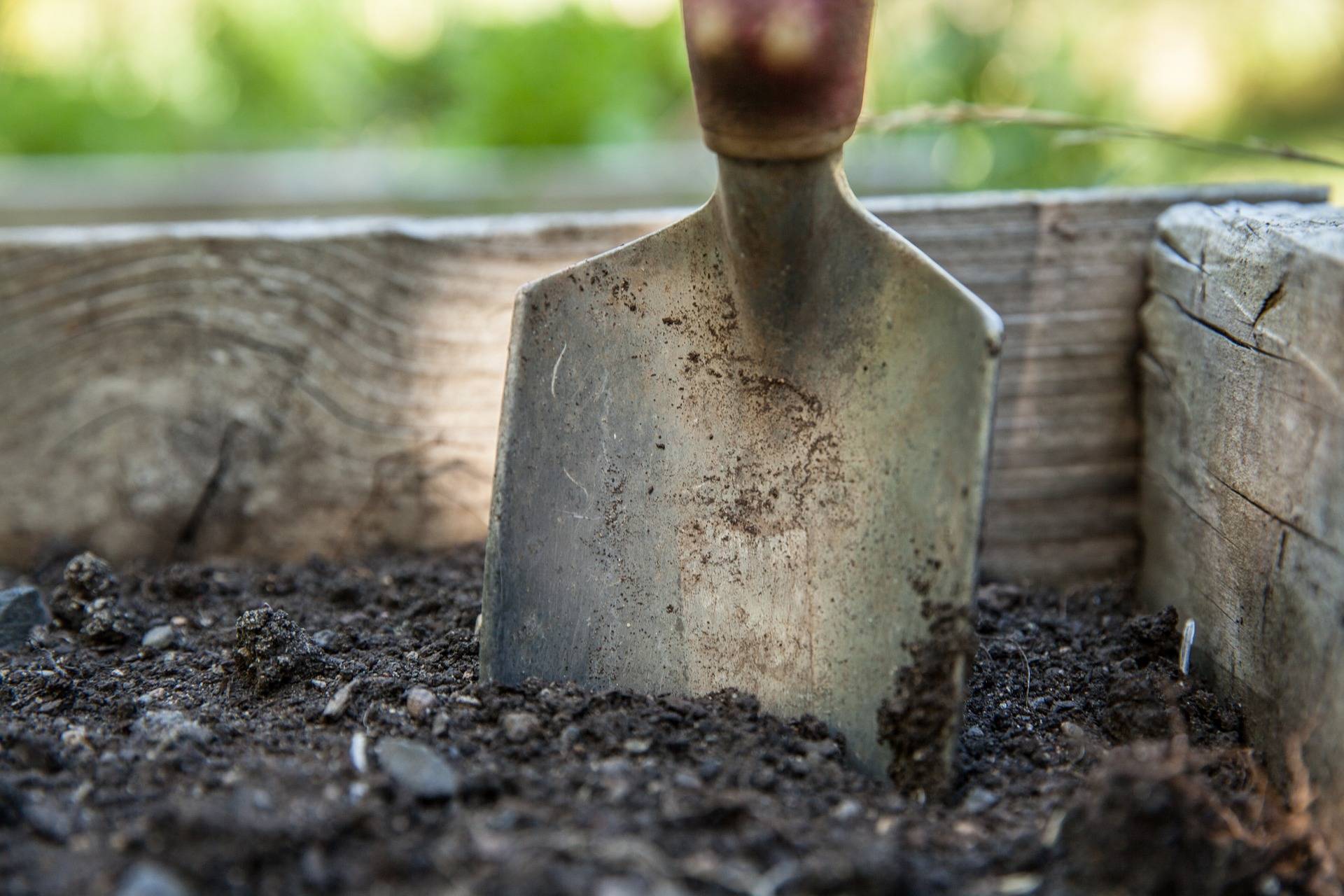Soil health is important for gardening. How to check whether your garden soil is acidic, alkaline or neutral? Though a laboratory soil test provides an accurate assessment of soil, we can test soil nature (pH) at home using simple methods using household items. You don’t need any soil pH testing kit.
Soil pH level is a measure of alkalinity, acidity or neutral. Plants thrive in a balanced soil with pH ranging between 5-8. Each plant has its own preferred soil pH. Some grow well in slightly acidic soil while others prefer alkaline soil. A neutral soil pH (7) is good for almost all plants.
The standard measurement of alkalinity and acidity is known as pH. The pH scale ranges from 0 to 14. A pH of 7 is neutral, which is neither acid nor alkaline. Below 7 is acid and above 7 is alkaline. A pH of 5.5 is 10 times more acidic than a pH of 6.5. Conversely, a pH of 8.5 is 10 times more alkaline than a pH of 7.5. A soil test will determine pH. (Source: Iowa State University)

Test You Soil pH Level at Home
Let’s start with our soil pH testing at home. What we need to conduct soil pH level (acidity / alkalinity) test at home: baking soda, vinegar, glass or plastic bowls, and distilled water. Drinking water can be used as an alternative for distilled water.
Collect Soil Sample
Dig out some soil from your garden or backyard. Take small amount of soils from different locations and blend them into one soil sample. Collect your soil sample in a clean plastic container or bag.
If you have a large backyard or garden, you should to collect multiple soil samples from different planting locations. Don’t put all into one soil sample. Keep separate samples for each specific area of your lawn or garden.
When an acid is mixed with an alkali, there is a chemical reaction. Our home soil pH test is based on this general principle. Each soil sample is tested for acidic nature by reacting it with an alkali. Soil is then reacted with an acid to check if its alkaline.
Soil Alkalinity Test
Take 1/2 cup of distilled water in a plastic or glass bowl and mix soil. Now, add 1/2 cup of vinegar, which is acidic in nature. If the soil is alkaline (pH higher than 7), you will see bubbling or fizzing. The higher the alkalinity of soil, more vigorous the bubbling.
Soil Acidity Test
Prepare another soil sample in a clean bowl. Add 1/2 cup of water and mix. Now, add 1/2 cup of baking soda. Bubbles or fizzes indicate that the soil is acidic. More vigorous bubbling indicates higher acidic soil (pH less than 7).
Most soils are slightly acidic. Hence, some bubbling or fizzing is natural. A more vigorous reaction means soil needs to be balanced for acidity suited for the plants you want to grow. You can grow plants that prefer acidic soil.
Red Cabbage Soil Test
Red cabbage can be used to test your soil pH level.
Chop 6 leaves of red cabbage leaves. Boil the cabbage leaves in 2 cups of distilled water (neutral pH 7). Don’t use tap water, as your tap water can be alkaline.
After 10 minutes, the water will start boiling and turn violet – blue. Strain the water and let it cool.
Add a spoonful of soil to a glass jar and pour the red cabbage water into it. Stir and let settle for 30 minutes.
If the water turns pink, your soil is acidic. More brighter the pink, lower the pH level (acidic soil). If it turn blue/green, the soil is alkaline. No change in color means the soil is neutral (pH 7).

Test your tap water pH level too. Hard water is alkaline (pH 8 or more) due to the minerals in it. Boil some red cabbage in your tap water. Compare the water color with the color when distilled water is used. If red cabbage boiled in tap water turns it more blue than distilled water, the tap water is alkaline.
Plants to Grow in Acidic Soil
Acid soil-loving plants, like blueberries and azaleas, grow only in acidic soils (typically found in parts of Minnesota). Many plants are adapted to alkaline soils, like in Iowa. These include pin oak, river birch, and white pine. However, high levels of acidity or alkalinity in soil makes growing plants difficult.
Here are some common vegetable and plants that you can grow in your garden if your soil is acidic (pH less than 7).
| Plant | Preferred Soil pH Level |
|---|---|
| Asparagus | 6.0-8.0 |
| Blueberries | 4.5-5.5 |
| Beans | 6.0-7.0 |
| Broccoli | 6.0-7.0 |
| Beets | 6.5-8.0 |
| Garlic | 6.0-7.5 |
| Kale | 5.5-6.5 |
| Leafy Greens | 6.0-7.0 |
| Leeks | 6.0-6.8 |
| Lettuce | 6.0-7.0 |
| Lima Beans | 6.0-7.0 |
| Mustard | 5.5-6.8 |
| Parsley | 6.0-7.0 |
| Peas | 6.0-7.5 |
| Peach Tree | 6.0-7.0 |
| Potatoes | 4.8-6.0 |
| Onions | 6.0-7.0 |
| Spinach | 6.0-7.5 |
| Swiss Chard | 6.0-7.0 |
| Turnips | 5.5-6.8 |
Plants to Grow in Alkaline Soil
Here are some common vegetable and plants that you can grow in your garden if your soil is alkaline (pH higher than 7).
| Plant | Preferred Soil pH Level |
|---|---|
| Artichoke | 6.5-7.5 |
| Asparagus | 6.0-8.0 |
| Brussels Sprouts | 6.0-6.8 |
| Cabbage | 6.0-7.5 |
| Cantaloupe | 6.0-7.5 |
| Grape Vines | 5.5-8.0 |
| Orange | 6.0-7.5 |
| Sugar Beets | 6.0-8.0 |
Balance Soil pH Level
When your garden soil testing shows high levels of acidity or alkalinity, you need to prepare your soil pH so that it’s ideal for the plant you want to grow.
For reducing soil acidity and increasing alkalinity, you can add wood ashes or agricultural lime to the soil. To make soils less acidic, the common practice is to add some form of lime. Ground agricultural limestone is most frequently used.
Pine needles or elemental sulphur fertilizers are lower soil pH and make it more acidic.
Elemental Sulphur is a yellow, inert, water-insoluble crystalline solid. Commercially, it is stored in the open, where it remains unaltered by moisture and temperature changes. When sulphur is finely ground and mixed with soil, it is oxidized to SO4-2 by soil microorganisms. (Source: SulphurInstitute.org)
Add organic waste, leaves, compost, peat moss, and other organic matter to your soil. Till your garden, add compost and organic matter, and turn the soil to cover the compost. Irrigate the tilled soil to allow better assimilation of compost.
Caution: Testing your soil using household methods is a good indicator of your soil health. However, it doesn’t provide the correct scale of soil pH. If you think that your soil needs treatment, you should use a soil pH testing kit or get your soil tested at a laboratory. Most universities provide soil testing service for very reasonable charges. You will also receive advice on preparing your soil better.

